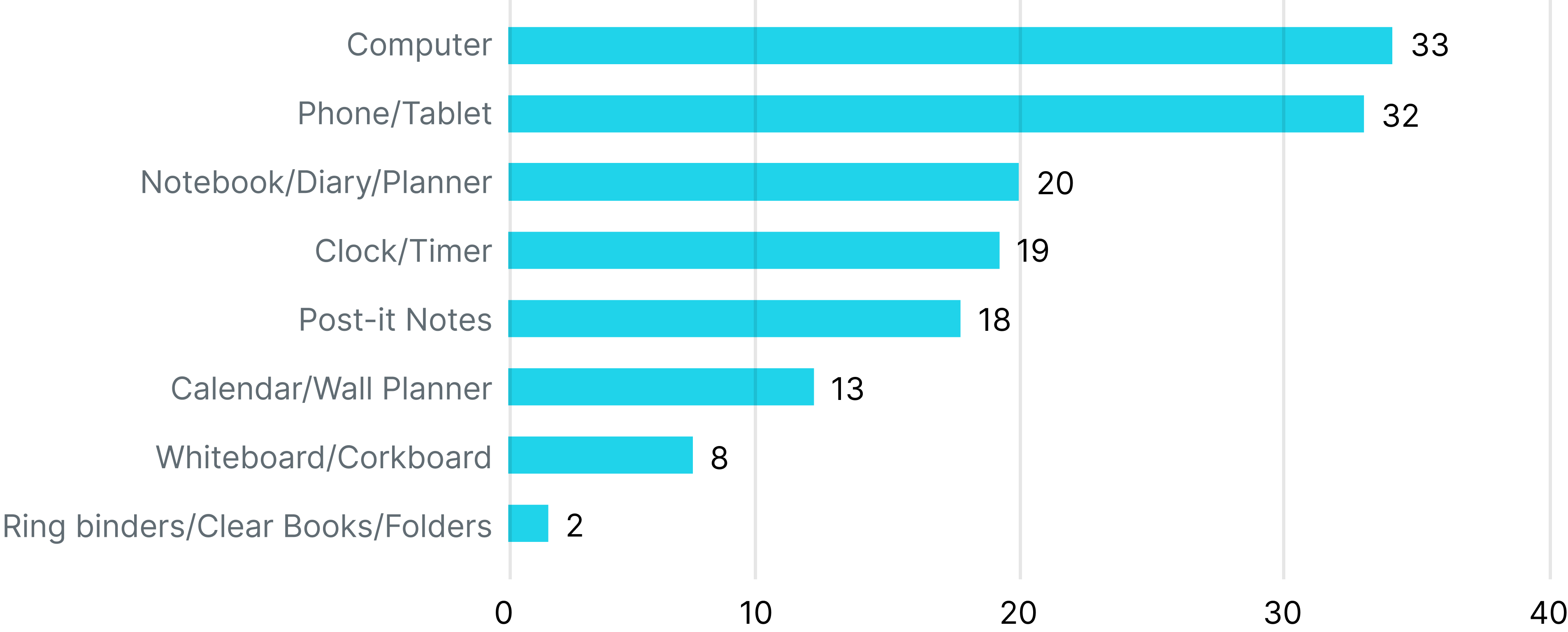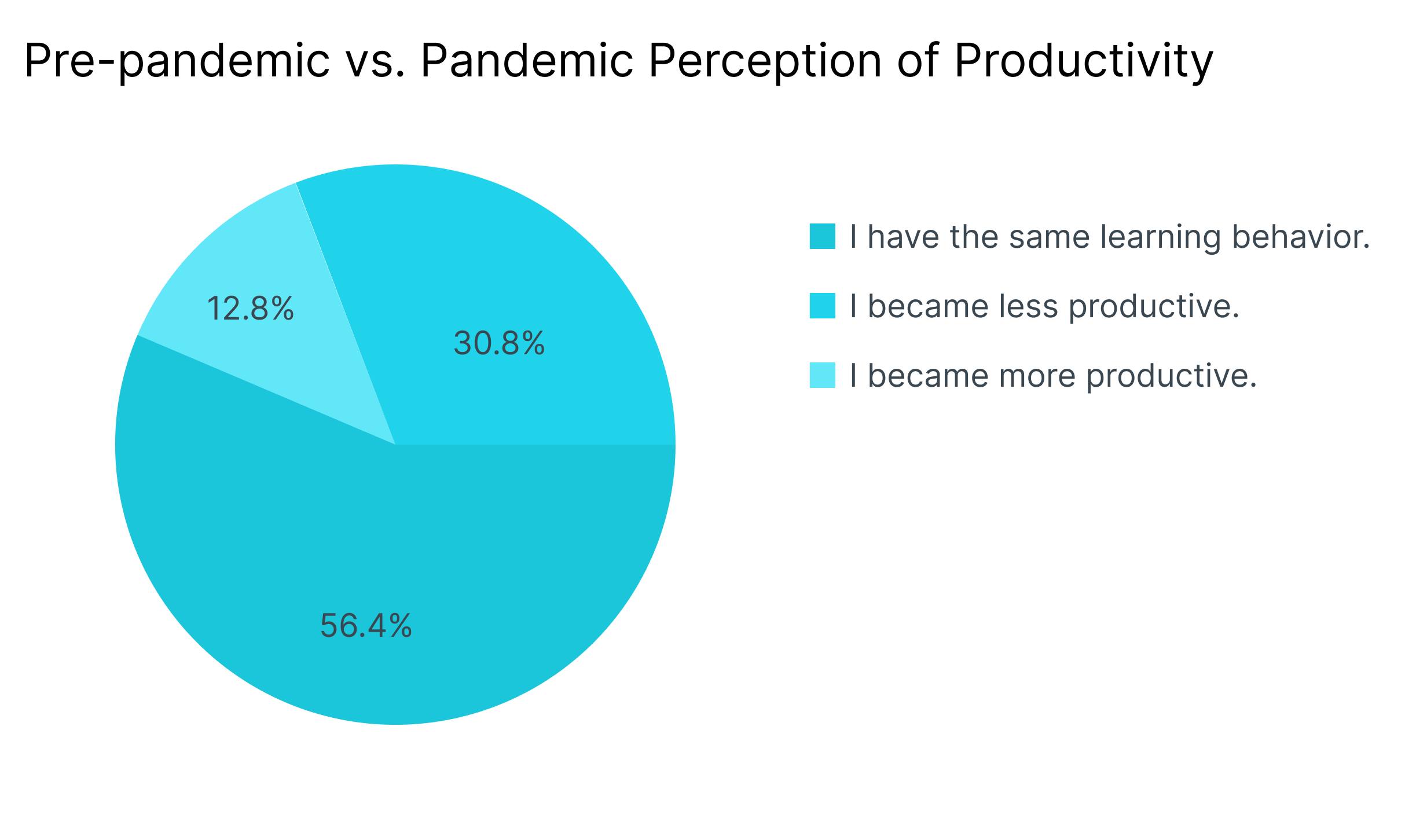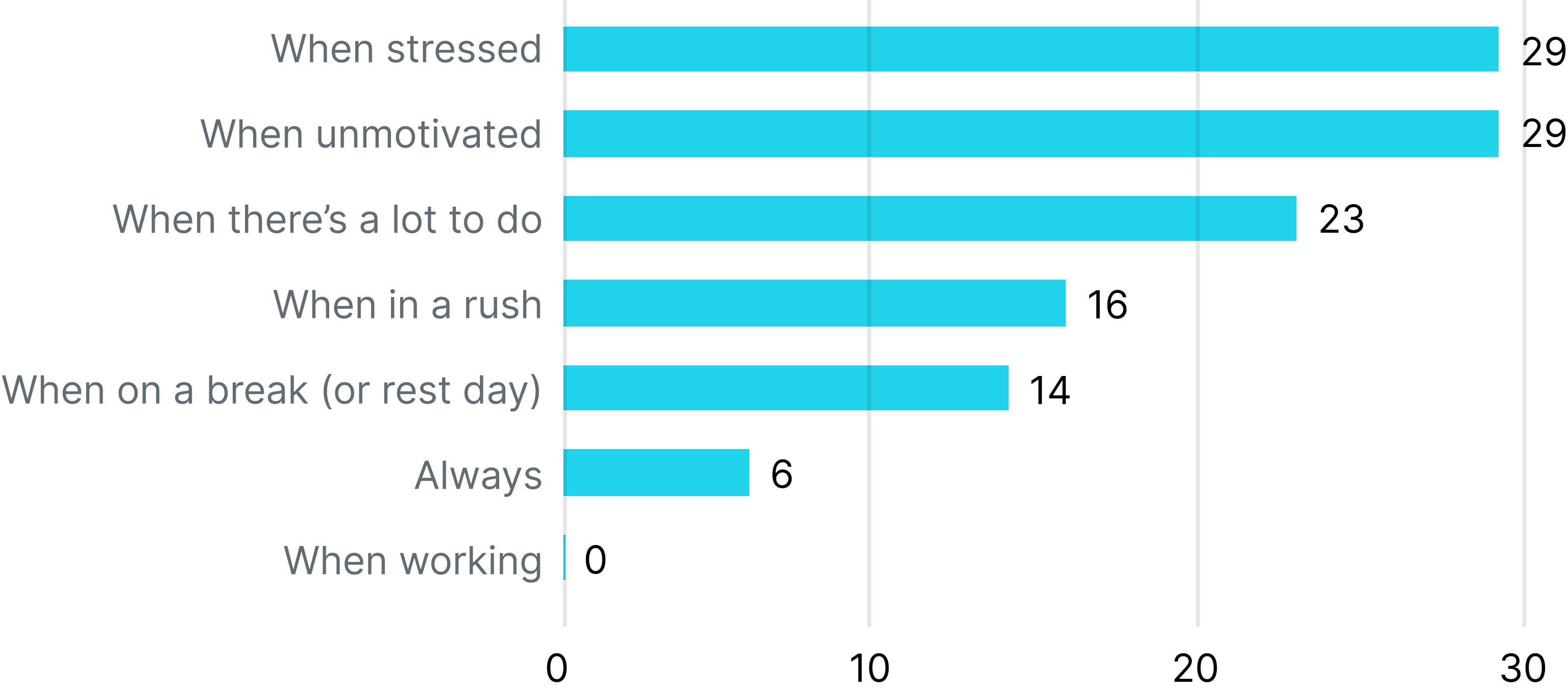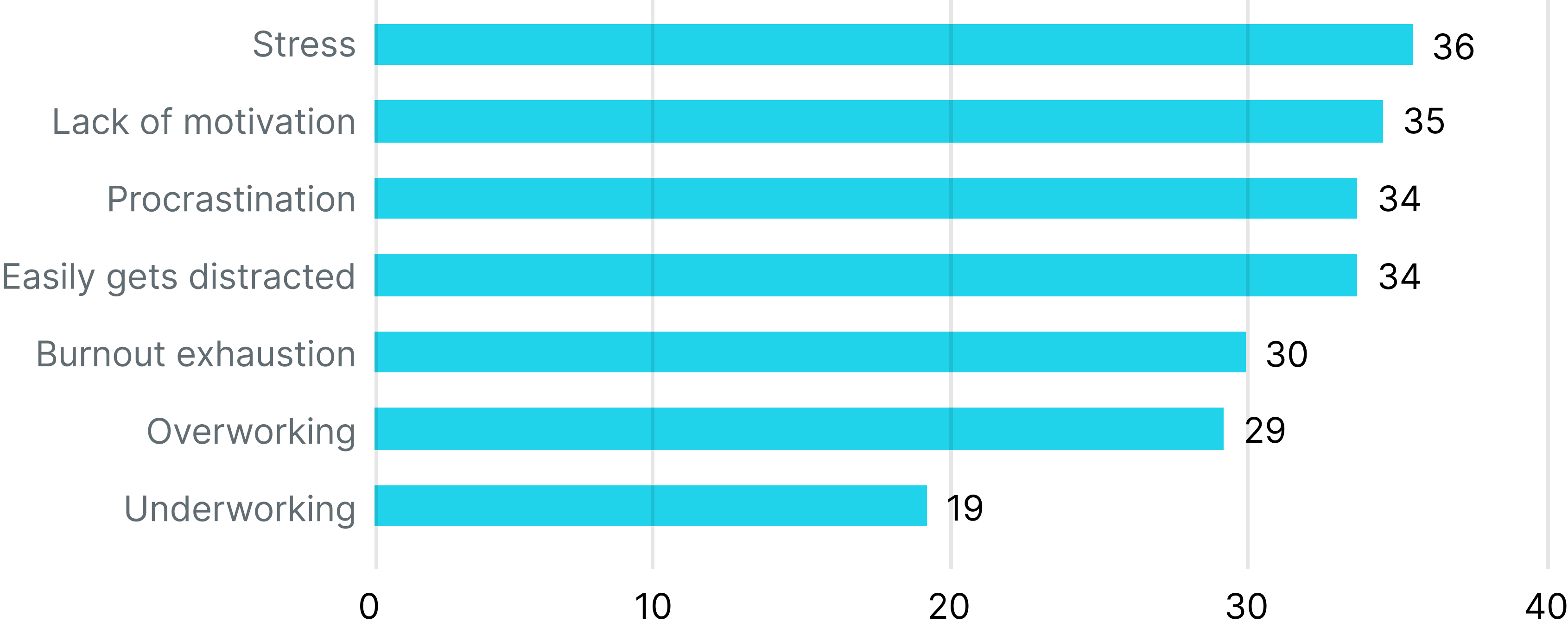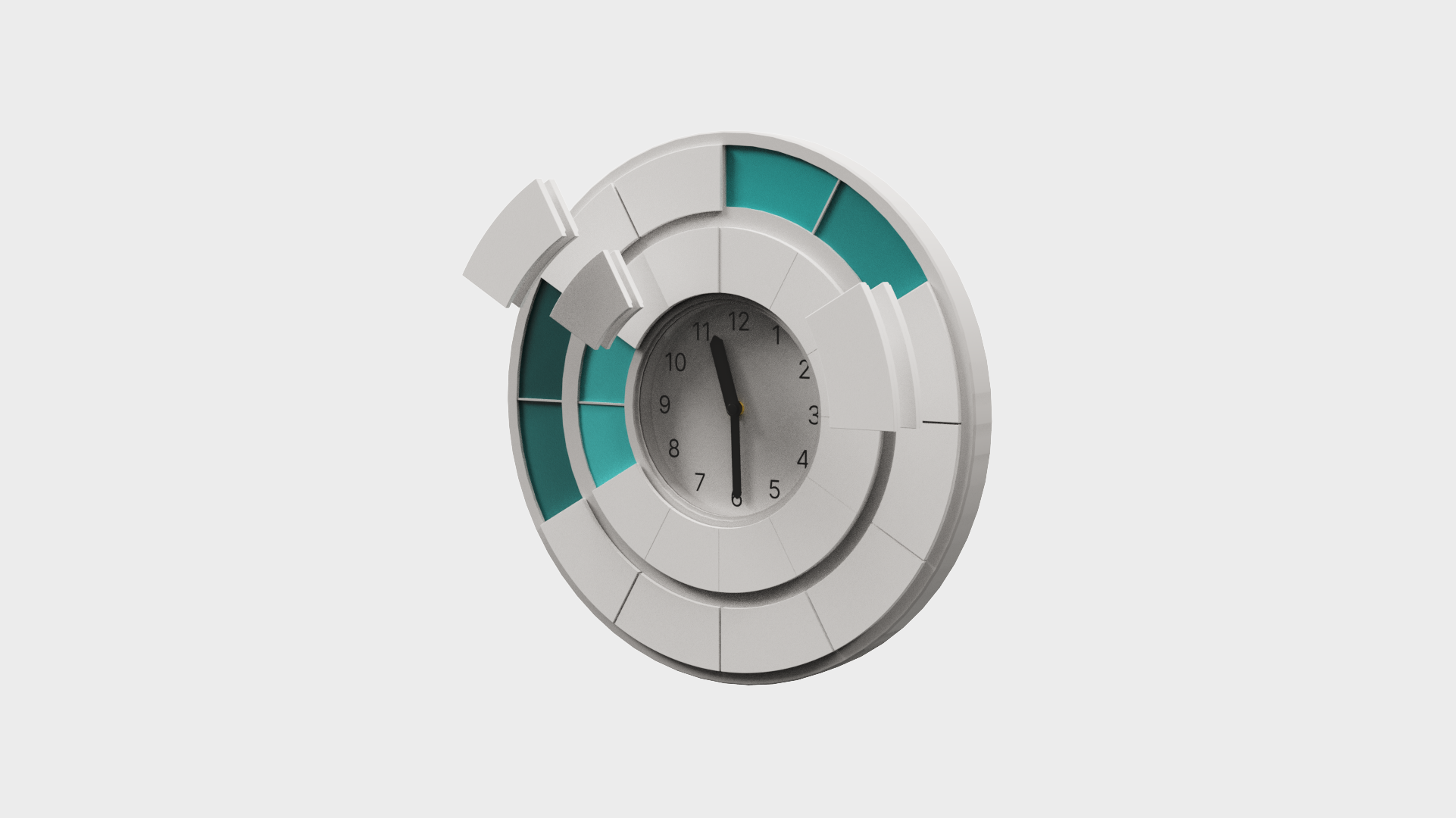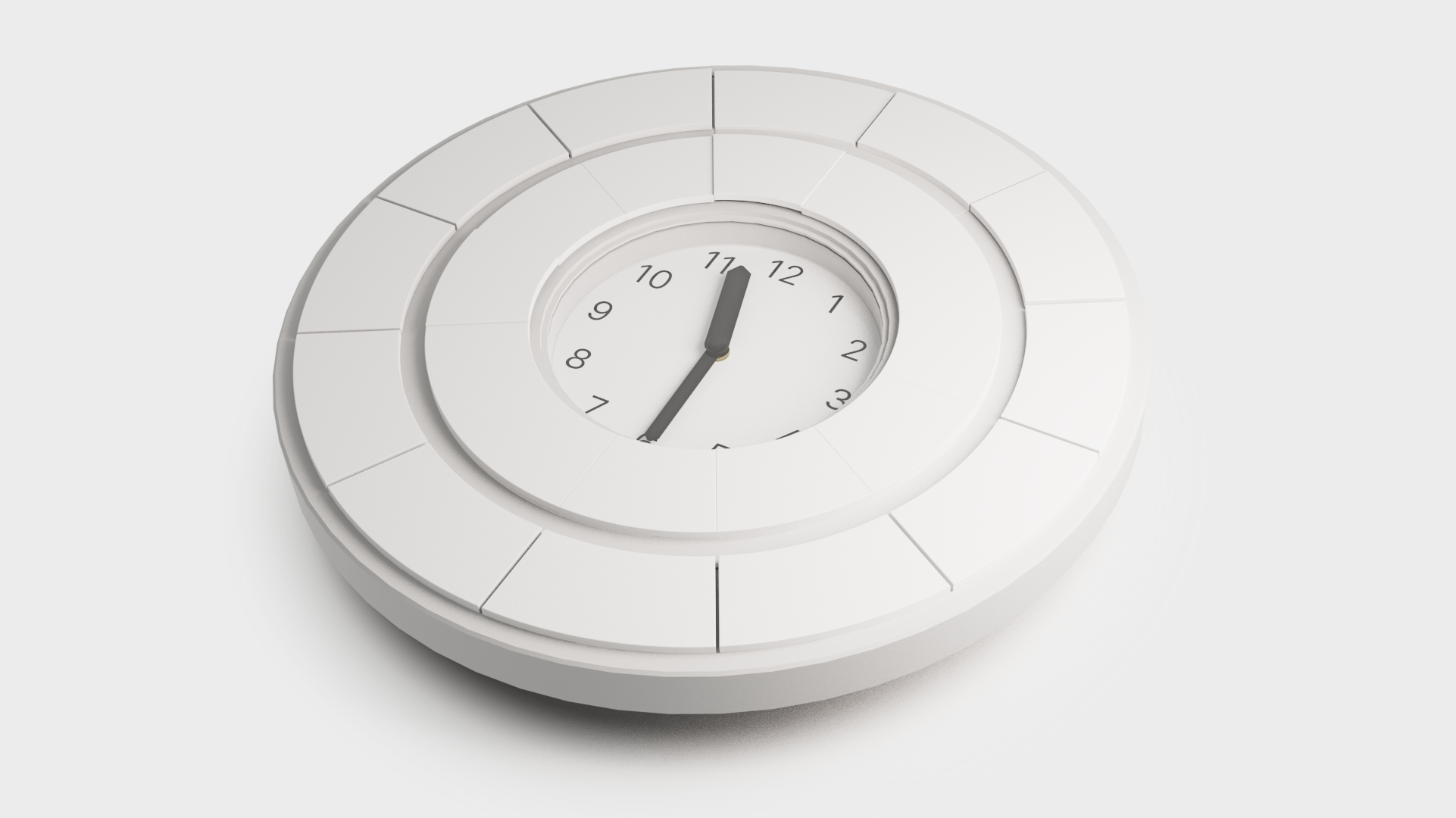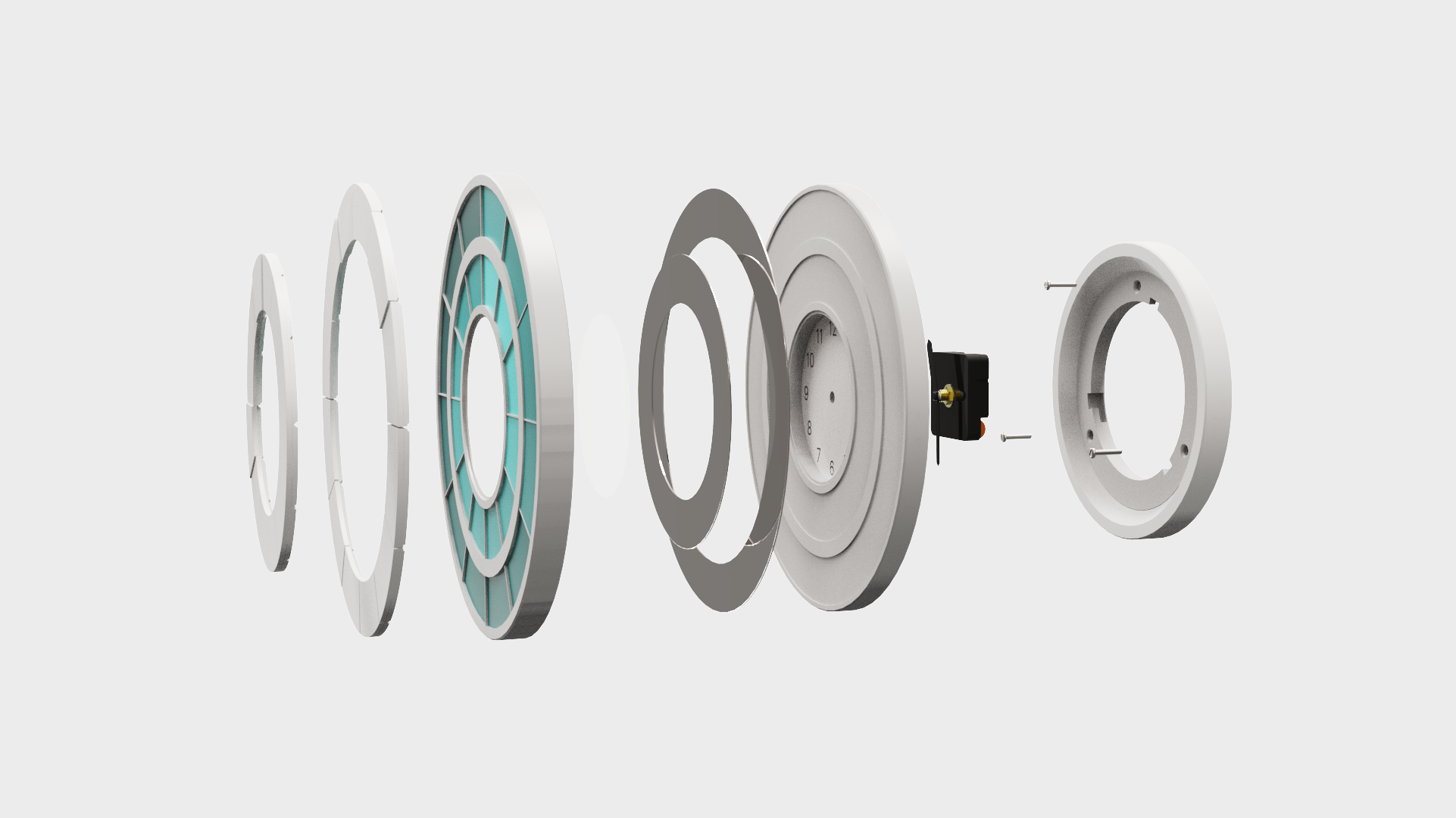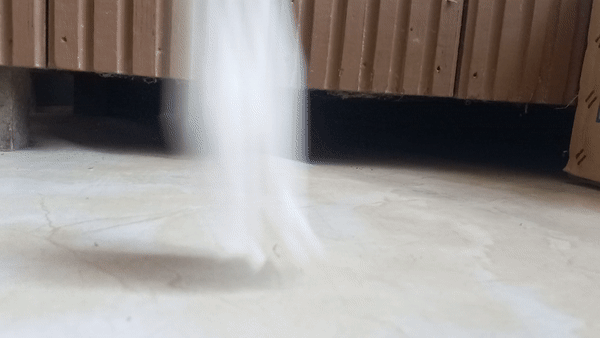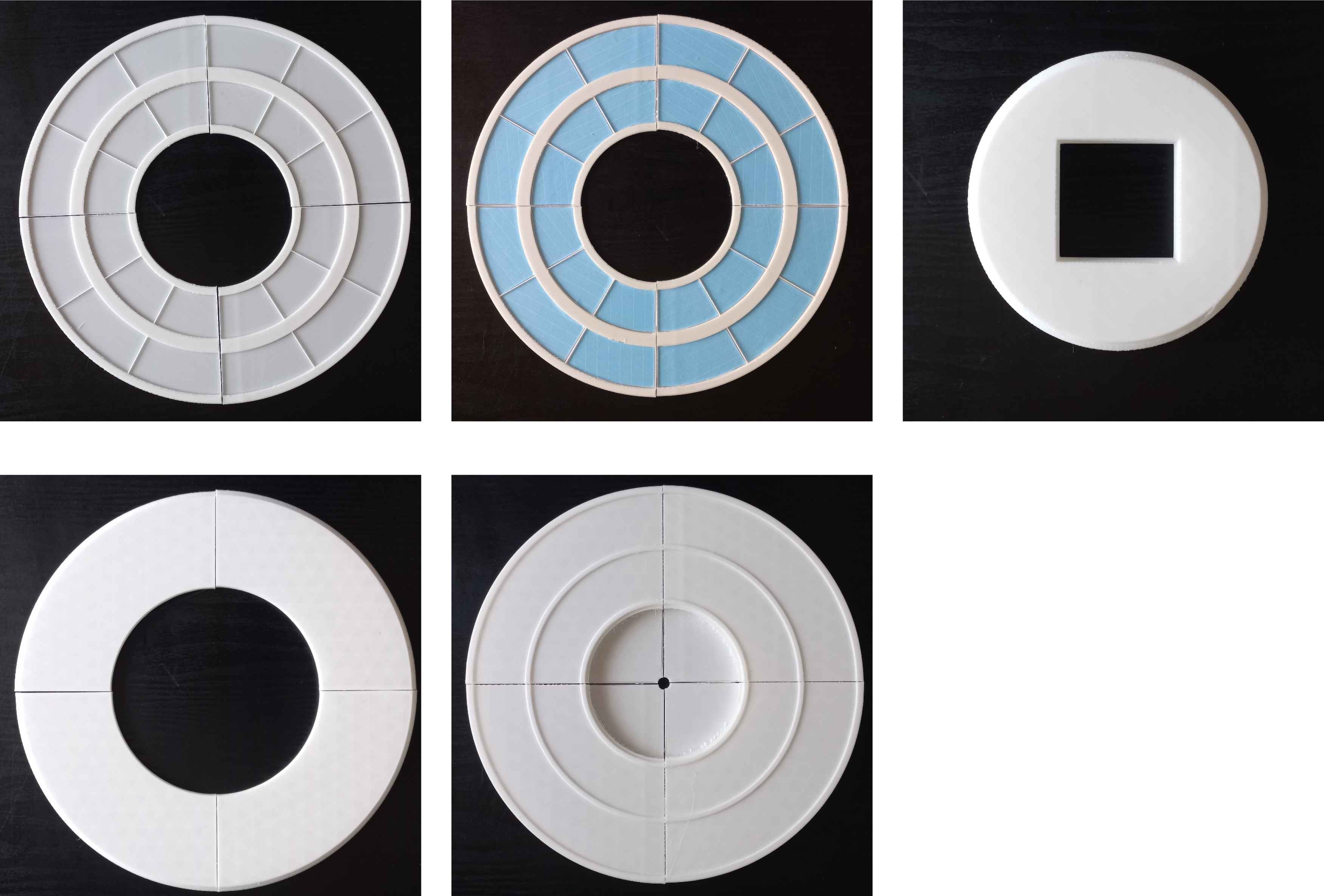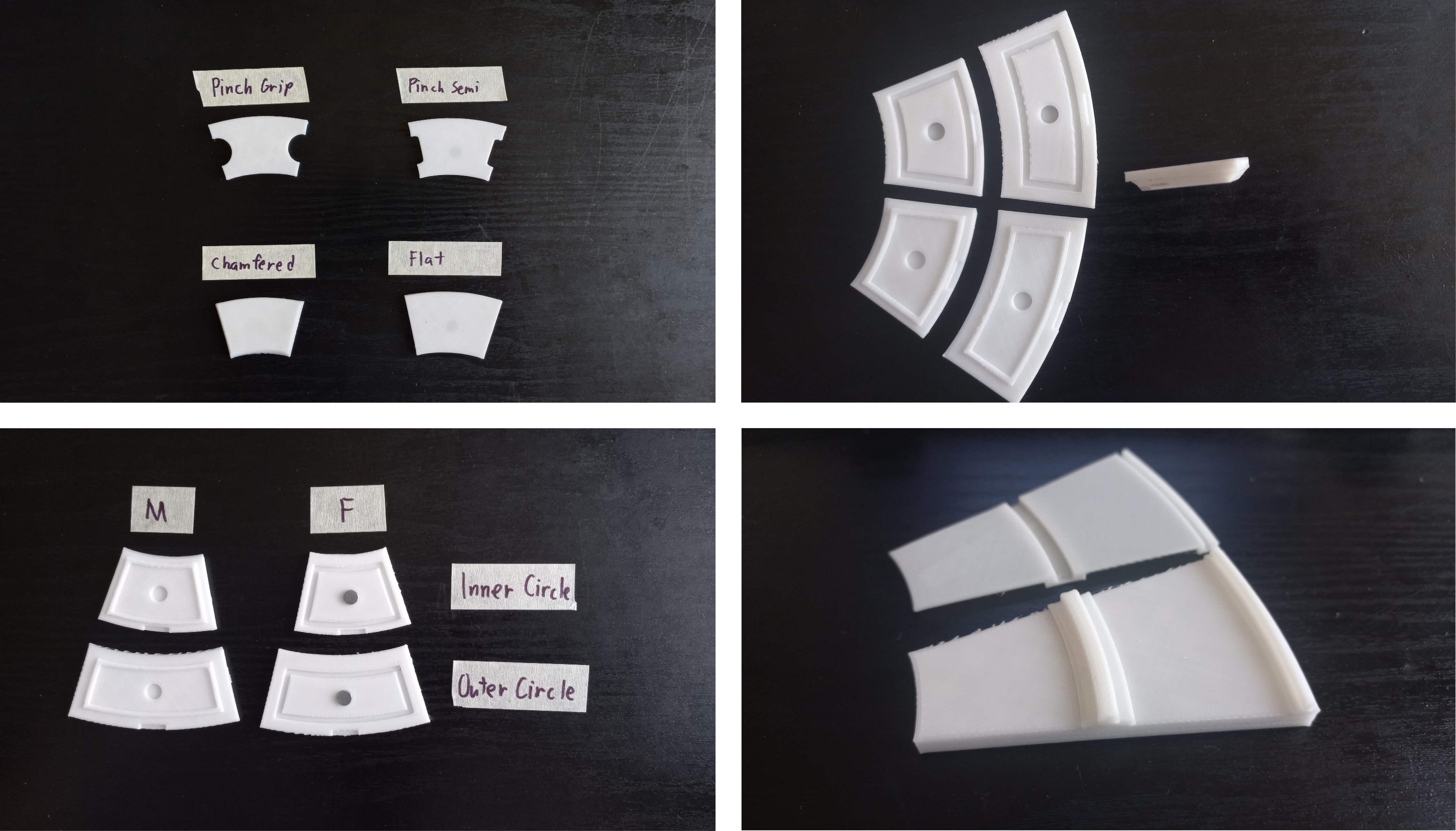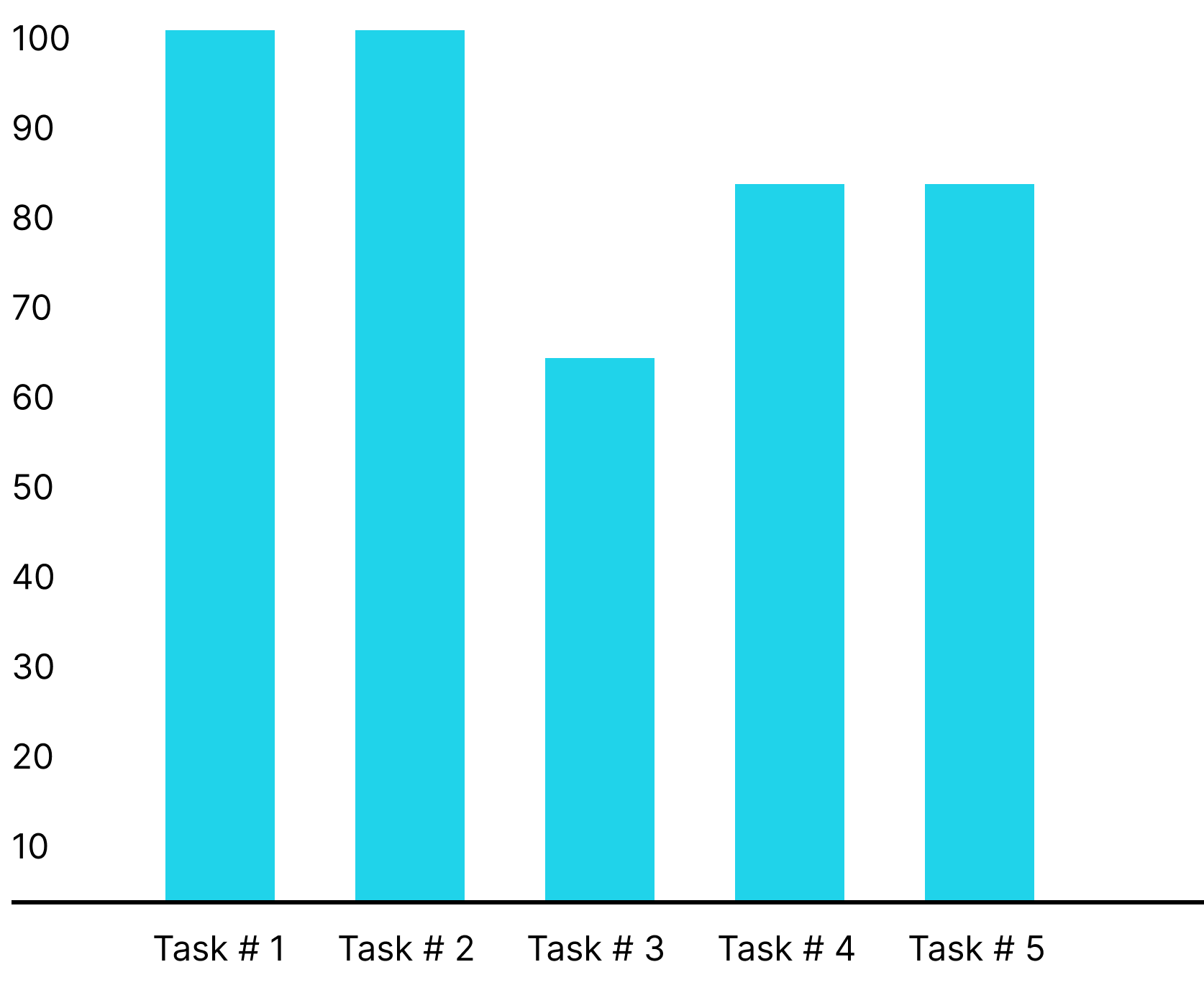EDUCATION • DIGITAL FABRICATION • EMBODIED INTERACTION
Whitespace
This project is my bachelor’s thesis on investigating self-directed learning behaviours of university students in the Philippines during the Covid-19 pandemic lockdown and the design of a tactile time visualization tool to help address issues of burnout.
Role: Industrial Designer, Researcher
Type: Bachelor's Thesis Project
Year: 2022
The Challenge
Learners in a Self-Directed Learning (SDL) environment take charge of their own learning to achieve academic success but are prone to procrastination, stress, perfectionism, and eventually burnout when left unmanaged. Possessing good time management is the foundation of learners in developing successful learning habits.
This projects aims to design a time visualization tool that would help manage one’s time to be more intentional with how learners spend their time and identify their individual learning habits and view their work-life balance through a comparison of colored work spaces and available personal white spaces in their day.
Hypothesis
Being able to visualize scheduling and learning habits of Self-Directed Learners helps them keep a healthy-work life balance by being intentional with the time they spend. This helps reduce academic burdens such as stress and procrastination which could potentially lead to burnout and a myriad of other medical problems.
DESIGN QUESTION
How might we mitigate stress and procrastination that leads to burnout of Self-Directed Learners through efficient time management that emphasizes a healthy work-life balance?
The study used a mixed-method research design that utilized a quantitative survey that aimed to assess the SDL behaviors and skills of undergraduate students of UP Diliman. This is succeeded by a qualitative one-on-one interview with volunteer participants to give their insights regarding their specific planning and learning behaviors. Analysis of both the quantitative and qualitative data were then conducted after to identify potential areas for design intervention to aid Self-Directed Learners.
Online Survey
A quantitative online survey questionnaire was sent to undergraduate students of the College of Science and College of Fine Arts of the University of the Philippines Diliman to assess their SDL behaviors and skills. The questionnaire investigated the learning behaviors of students, especially amidst remote learning in the pandemic. Respondents were asked to identify products they used to keep their learning organized, what their most challenging area of their learning was, their work time preference, and how they felt about their SDL environment due to the Covid-19 pandemic.
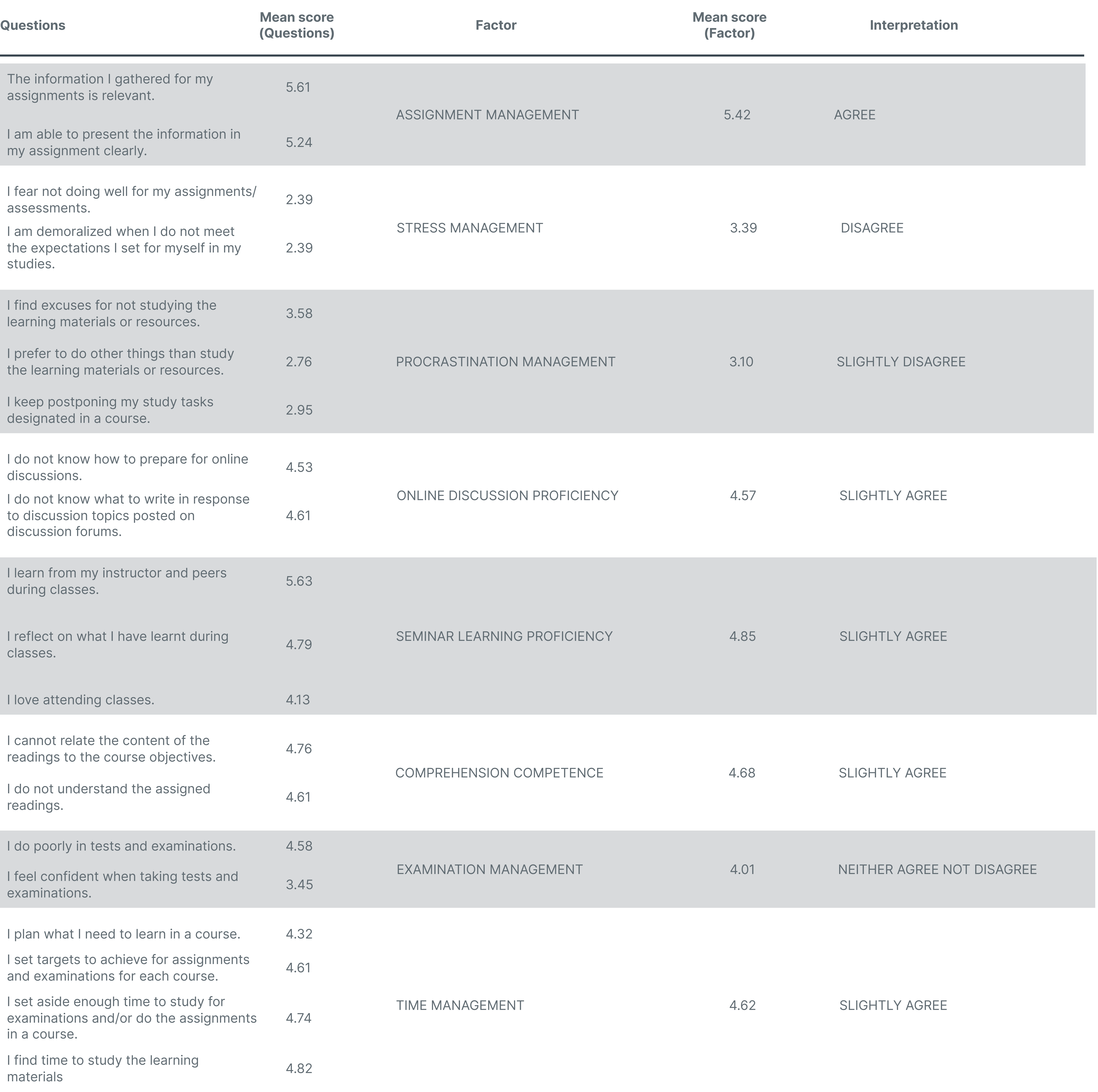
Self-Directed Learning diagnostic tool
Adopting Henry Khiat’s validated 26-item learning-diagnostic tool, I included a 20-item questionnaire into the online survey where I asked respondents to rate their own understanding of their own learning needs as a first line of self-diagnosis to SDL through a 7-point Likert scale with the following factors:
- Assignment Management. Ability to plan, do, and score well in the tutor-marked assignments and group- based assignments.
- Stress Management. Ability to handle academic stress.
- Procrastination Management. Ability to manage procrastination in learning.
- Online Discussion Proficiency. Ability to do well in online discussion forums.
- Seminar Learning Proficiency. Ability to learn during seminars.
- Comprehension Proficiency. Ability to understand readings and make study notes.
- Examination Management. Ability to plan, do, and score well in examinations.
Time Management. Ability to utilize study time effectively.
One-on-one interviews
Ten volunteer participants taken from the survey respondents at random were asked to participate in one-on-one qualitative interviews where they gave insights regarding their specific planning behaviors, learning habits and routines, as well as their motivational drivers to better understand their SDL behaviors and create design considerations for the product solution.
This was conducted through the use of Zoom, an online video-conferencing platform, for those who opted to conduct the interview synchronously and emailed written interview questions for those who opted to participate asynchronously due to lack of schedule availability. The interview insights of the ten participants were then transcribed and analyzed to identify gaps and pain points to be compared to the survey.
Insights
The use of digital tools
- Remote learning due to the Covid-19 pandemic has encouraged learners to learn and use digital tools to aid in their learning with everything being online.
- Learners choose the tools that would benefit their individual learning styles better.Some learners highlighted a preference for digital devices.
- Others have tried using digital tools but still opted to use analog organizational tools such as post-it notes, notebook planners, calendars, whiteboards, and timers among others to minimize potential distractions and time-wasters in the use of technology.
- Some who had no preference for one over the other would utilize both digital and analog tools in a combined system depending on their function and benefit.
The effects of the Covid-19 pandemic on learner’s productivity
- A majority of respondents said that they actually became less productive in the pandemic when they were conducting SDL through managing their own learning schedules and strategies rather than relying on an instructor’s in-detail guidance for their respective classes during in-person learning.
- After experimenting with several techniques, tools, and strategies, learners settled with what was most comfortable and efficient for them to use, whether it be digital or analog, after having tried both.
- A majority of respondents noted that they felt they could not implement the same learning behaviors they are currently conducting in remote learning to in-person course delivery and that they would need to adjust accordingly to find what works best for them.
- Respondents were motivated primarily by deadlines and not learning itself, meeting academic requirement deadlines for the sake of deadlines. This leads learners to feel unmotivated to conduct learning activities and makes them prone to procrastinating on tasks and overwork themselves when due dates are near.
This planning, reflection, and revision behavior of learners looking into their own learning is a primary characteristic of Self-Directed Learning and common trend found in respondents.
Whitespace represents the available white spaces in one’s life–the available time we have where we feel in control. As a person gives part of their time in a day to conduct learning activities, they slowly take away a white space to focus their attention to the said activity.
This is evidenced by the appearance of color. It serves as a visualization tool that helps self-directed learners to consciously be more intentional with how they spend their time and identify their learning habits and view their work-life balance through a comparison of colored work spaces and available personal white spaces in their day.
A ‘time cap’ that limits consecutive work hours is created when too many tiles are stacked on top of one another on the next available white space. This is represented by the tiles falling due to the immense weight applied to the stack. This parallels how a learner loses control of their lives as the immense weight of overexertion is not mitigated with ample time for rest.
A prototype was assembled through 3D printing. Due to the limitations of the printer’s bed size, the parts were printed piece by piece and attached using super glue to create the larger components.
Color was added to the top of the clock case through the use of sticker paper. This represented the colored spaces that indicate work time blocked.
Tile variations were iterated which aimed to repeatedly test ergonomic factors such as finger spacing and positioning to provide appropriate space for the fingers to grip the tiles on the product. This involved having a pinch grip which situates the thumb and index finger, pinch semi which is similar to the pinch grip variation but focuses more on tactile adhesion of the fingers, a chamfered variation to easily pull off the tile from the surface it is situated on, and a flat base.
User Testing
User testing was conducted over Zoom due to the limitations of remote learning in the pandemic.
Participants
Six (6) participants were recruited for the test using the following criteria:
- They are currently enrolled university students
- Are of ages 18 - 24
- And have not participated in the survey and interviews conducted prior in the study
Test metrics
The test consisted of measuring the following metrics:
- Effectiveness
- User task completion rates
- User Satisfaction
- Task-level satisfaction rating
- System Usability Scale (SUS)
As this is a physical product being tested virtually due to the Covid-19 pandemic lockdown restrictions, participants were given task scenarios and were instructed to vocalize their thoughts, reactions, and actions to complete the tasks in order to instruct me to perform the vocalized actions on their behalf, strictly only following what the participant says and not guiding their decisions.
Task Completion
Labels from A to L were placed on the wall aligned with the tiles of the product. Users were instructed to answer which tiles to pick up based on the given task scenarios by indicating its location through identifying whether it is located in the inner or outer circle and indicating the letter assigned to its segment. Example: Inner C.
The five tasks were divided into the following:
- Task #1 and Task #2 measures product Intuitiveness by allowing participants to identify certain locations based on time in the product.
- Task #3, Task #4, and task #5 were three consecutive tasks that aimed to simulate a learner scheduling three different learning activities in a single day based on their own perception and ability to schedule their tasks.
After each task, a satisfaction rating using a 5-point Likert scale was conducted to assess the participants’ ease in completing the given task.
Tasks 1 &2 both garnered a hundred percent completion rate, signifying that users found the product to be very intuitive having accurately identified certain times of the day and conduct basic tasks like blocking out multiple consecutive hours and stacking them on top of one another on the next available white space. After conducting the tasks, participants noted on a 7-point Likert scale that measured task-level satisfaction that boths Task #1 and Task #2 were ‘Very Easy’.
Task #3 garnered a 66.67% completion rate while Task #4 and Task #5 both garnered an 83.33% completion rate. This points to users initially having difficulty applying the product system but then soon adapted in the succeeding tasks. On a task-level, participants noted that the three tasks combined was ‘Slightly Easy’.
System Usability Scale (SUS)
The System Usability Scale was then conducted at the end of all tasks. This was to assess the overall satisfaction and usability of the product system. Participants found the system to be of a “Good” rating.
Conclusion
In conclusion to the study, it can be stated that a Self-Directed Learning environment poses immense demands and challenges to learners that negatively affect their perception of control of their lives. Efficient time management through time blocking helps give back control in the lives of learners. Furthermore, a physical representation of an abstract concept such as one’s time spent in a day helps learners have a more visual and tactile intentional control of their lives, giving them the perception of being in control in spite of their learning demands. Time visualization allows learners to properly identify their learning habits and patterns and, above all, prioritize their well-being first and foremost.
Due to the limitations of the pandemic which resulted in conducting usability testing remotely through vocal instructions only through an online video-conferencing platform, it is recommended to conduct further testing and validation with users who would handle the product physically. It is also recommended that they not only use the product once to check general features, but to use it for a period of time to observe habits and routines that may arise while using the tool.
© Erik Asia 2025. All rights reserved.

